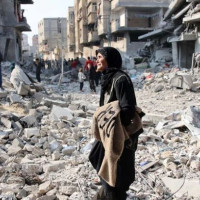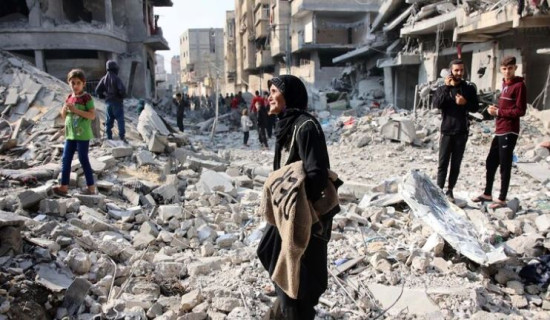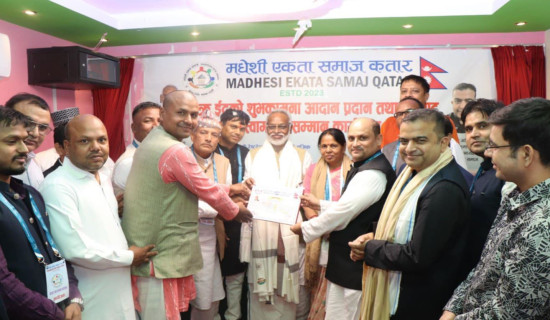- Monday, 9 June 2025
Drug control top priority of govt: Minister Lekhak
By A Staff Reporter,Kathmandu, June 9: Minister for Home Affairs Ramesh Lekhak has affirmed that the control of narcotics remains a top priority for the government. Highlighting the alarming situation caused by illegal trade and abuse of drugs in society, he stressed the need for collective efforts to tackle the issue effectively.
Speaking at a programme organised at the Ministry on Sunday in observance of the International Day Against Drug Abuse and Illicit Trafficking, Minister Lekhak underscored the importance of coordinated action and collaboration among all concerned stakeholders to reduce and control drug use. Minister Lekhak said that drug abuse lies at the root of suicides, road accidents, and cybercrimes, and therefore, a united national response is imperative.
“Considering the grave impact of drug trafficking, storage, and consumption—activities that cause irreparable harm to the nation each year both in terms of lives and resources—it is essential to foster cooperation between governmental and non-governmental organisations, and civil society,” Minister Lekhak said.
Minister Lekhak further emphasised the critical role of families -- especially parents — alongside educational institutions and local authorities, in combating drug misuse and illegal trafficking. "The closest points of contact in this effort are the family unit, including guardians, school communities, and the local level, whose focused attention is vital."
Calling for the upcoming nationwide observance of the International Day Against Drug Abuse, scheduled from June 20 to 26, to be result-oriented, Minister Lekhak urged everyone to contribute meaningfully to the campaign.
On June 26, the world is marking International Day against Drug Abuse 2025: “Breaking the Chains: Prevention, Treatment, and Recovery for All!” The slogan emphasises community support, healthcare access, and the need for global solidarity in addressing drug abuse and illicit trafficking.
Underlining the adverse effects of drug abuse on society, he stressed the importance of individual awareness and vigilance. He also recommended regular interaction between parents and teachers within schools, the inclusion of drug education in school curricula, and a national-level effort to dismantle the networks and vicious cycles associated with drug-related issues. He advocated for public awareness initiatives to be pursued as a nationwide movement.
Since assuming office, Minister Lekhak remarked, issues related to drug abuse, suicide, road accidents, and cybercrime have emerged as more serious challenges.
The Ministry, he said, is actively working to address them. “A significant number of crimes are found to be linked to drug use,” he said. “Although efforts are ongoing, the results have not yet met our expectations.”
Status of drug abusers
The number of illicit drug users in Nepal is increasing by 5.06 per cent every year taking the total users to an estimated 156,821 as of 2024.
According to Nepal Drug Users' Survey-2020 of the Ministry, the third survey of its kind published by the Ministry of Home Affairs, the total drug users in Nepal were actually 130,424, in 2020, at an increment rate of 5.06 per cent annually. The Ministry conducts such drugs users’ survey in every five-year interval.
The same record of drug users survey conducted by the Ministry in 2012 showed that there were 91,534 drug users in Nepal, and 46,309 in 2006. Among 130,424 drugs users, 121,692 (93.3 per cent) are male and 8,732 (6.7 per cent) female.
"If we have to rely on the recently conducted survey of drugs users in Nepal, the actual drug users in Nepal are 130,424 but when we have to assume 5.06 per cent of annual increment from 2020, it might have reached 156,821 in 2024 of mid-April," according to Basanta Raj Kunwar, executive director of Narconon Nepal, an organisation working on drug rehabilitation programme, and former SSP, who served Nepal Police for 20 years.
"The abuse of illegal substances has been one of the major problems faced by Nepal for last four decades," said Kunwar.
As per the survey report, majority of drug users (69.5 per cent) in Nepal are between the ages of 20-29. The highest portion of drug users were reported in Bagmati Province (35.6 per cent) and lowest portion in Karnali (1.4 per cent).
Likewise, injecting is the main mode of drug intake. Among the total drug users, 29.3 drug users were People Who Injected Drug (PWID), and about 5.0 per cent drug users shared needles and syringes with others. Peer pressure was the major cause reported for drug intake (89.4 per cent) followed by recreation (72.1 per cent), according to the Survey-2020. Cannabis (84.7 per cent) was the most commonly used drug followed by tranquilisers (73.1 per cent) and opiates (46.8 per cent) in Nepal, according to the survey.
















